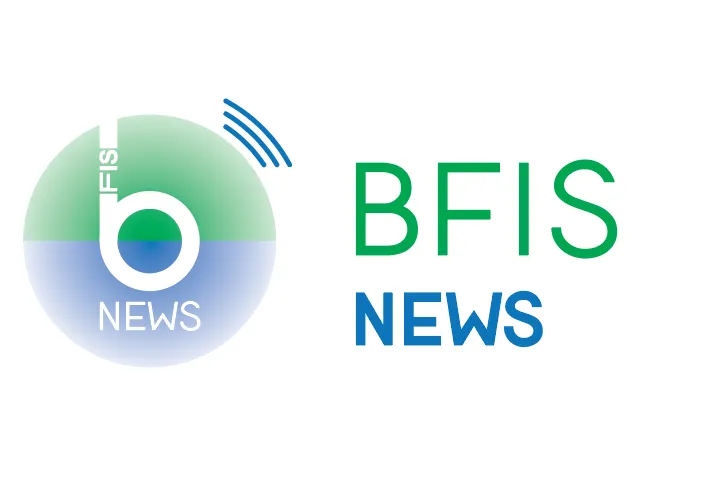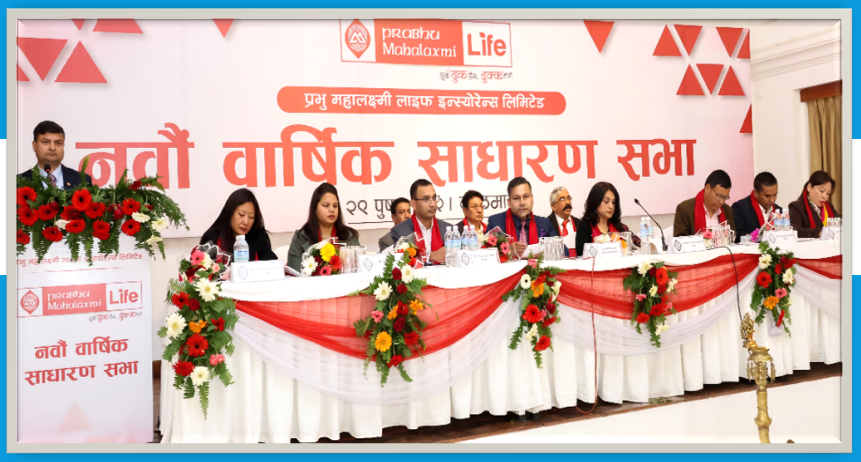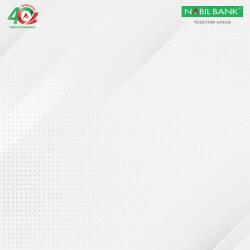Is Nepal Ready for NFRS 17? Unveiling the Challenges and Charting the Course, Article of Birod Wagle
- Birod Wagle
- 2024 Jun 04 18:37

Background
The issuance of IFRS 4 by the International Accounting Standards Board (IASB) fell short of stakeholder expectations due to several drawbacks. These include the lack of comparability among entities’ accounting methods and lack of transparency resulting in opacity for investors regarding insurance entities’ profitability drivers. Furthermore, there was an economic mismatch between assets and liabilities, along with disparate revenue recognition mechanisms across jurisdictions. Recognizing these shortcomings, the IASB acknowledged the necessity for high-quality accounting standards to address the inadequacies present in IFRS 4: Insurance Contracts.
On June 26, 2019, the IASB issued an exposure draft outlining proposed amendments in the standard. In June 2020, the IASB formally adopted the final set of amendments and postponed the standard’s effective date of IFRS 17 from January 1, 2021, to January 1, 2023. The Insurance Act, 2022 has granted significant authority to the Nepal Insurance Authority (NIA), empowering it to oversee the development of the insurance market and to conduct both prudential and conduct supervision. From the perspective of the insurance regulator, a primary concern lies in ensuring that insurers adhere to new reporting standards, particularly in relation to financial statements, and how these standards will interface with the solvency balance sheet and capital framework set forth by the regulator, including riskbased capital and solvency directives.
Upon initial examination, it appears that the International Financial Reporting Standard 17 (IFRS 17) aligns well with supervisory reporting, valuation, and capital standards outlined in the Insurance Core Principles. This standard has garnered positive reception from prudential regulators worldwide, as it not only fosters trust and growth but also bolsters the long-term financial stability of the global economy.
The Accounting Standards Board of Nepal (ASB) has issued NFRS 17: Insurance Contracts, slated to take effect from the July 17, 2023. Despite crossing the deadline for its implementation, efforts are underway with close collaboration between the NIA, ASB, and the Institute of Chartered Accountants of Nepal (ICAN) to ensure the adoption of this technical standard. Undoubtedly, achieving compliance with this high-quality standard necessitates enhancements in processes, systems, data management, and organizational structures within the industry.
Thus, a clear and pragmatic implementation roadmap is imperative for facilitating a seamless transition. Recent Developments A high-level committee has been established in Nepal for the implementation of Nepal Financial Reporting Standards, comprising executive directors from both accounting and insurance regulatory bodies, along with representatives from market stakeholders. This committee has further established a technical subcommittee tasked with conducting a comprehensive gap analysis of the new standards i.e., NFRS 17, administering an implementation readiness survey for NFRS-17, gathering insights on IFRS-17 preparedness from international counterparts, assessing the potential impacts on insurers’ processes, systems, and data, pinpointing areas of potential misalignment between NFRS-17 and tax laws, as well as with existing insurance regulations, circulars, and directives issued by the NIA. Additionally, the subcommittee is charged with identifying areas requiring interpretation, and recommending necessary training and communication strategies for stakeholders. The technical committee has already submitted a preliminary gap analysis report, which was later endorsed by the high-level committee.
In parallel efforts, the NIA, in collaboration with the Insurance Institute Nepal, has conducted comprehensive NFRS training sessions for industry professionals, with a particular emphasis on NFRS 17. Moreover, NIA has successfully organized interactive programs in partnership with ICAN and ASB, shedding light on the nuances of NFRS 17 implementation within the local insurance market. These initiatives have underscored the pressing need for preparedness and highlighted the transformative potential of the new standard, garnering widespread support and enthusiasm from all stakeholders involved.
Industry Survey Result The Technical Committee undertook a survey aimed at assessing the insurance industry’s preparedness for implementing NFRS 17. The survey was multifaceted, exploring various dimensions such as the level of engagement from top management, the types of impact studies conducted by insurers, areas where significant changes are anticipated, and the additional guidance or support sought from regulators.
Out of the 35 insurance companies approached, responses were received from 32, providing valuable insights. The participants included 14 life insurance companies, 16 non-life insurance companies, and 2 reinsurance companies, totaling 32 participants, with only 3 missing responses. The survey findings were structured around five major themes, each shedding light on different aspects of the industry’s readiness and challenges:
Awareness and stakeholders engagement: This theme examined the level of awareness and engagement from top-level management within insurers. While the majority of senior management and board members are aware of NFRS 17, proactive initiatives towards implementation are limited. Only a fraction of insurers have established dedicated implementation committees or task forces, indicating a lack of adequate prioritization and engagement from the top.
Impact assessment: The survey delved into the extent of impact assessment conducted by insurers, covering various aspects such as accounting policies, data, systems, processes, skills, and resources. Despite the principles-based nature of NFRS 17, indicating open interpretation of accounting policies, progress in understanding and interpreting these policies remains limited. While qualitative assessments have been conducted by a majority of insurers, quantitative assessments and gap analyses are lacking, with significant anticipated impacts across organizational structures, data management, systems, processes, and skills.
Analysis of resources: Significant resource constraints were identified concerning the availability of specialized professionals essential for NFRS 17 implementation. These include professional accountants with NFRS 17 knowledge, actuaries and IT personnel. Challenges related to the lack of in-house actuarial expertise and actuarial models were highlighted, along with anticipated difficulties during and post-implementation phases.
Implementation and training: This theme focused on insurers’ efforts in developing implementation plans and providing training to staff. While some insurers have discussed implementation plans at the management and board levels, the development of comprehensive implementation plans remains limited. Training provided to staff has mostly been at an introductory or basic level, indicating a need for more extensive training programs.
Additional regulatory support: Insurers expressed a strong need for further guidance from regulators, particularly regarding the interpretation of accounting policies and achieving uniformity of application across the industry. Specific areas requiring guidance were highlighted, along with additional support needed in the form of comprehensive training, guidance notes, facilitation of industry-wide discussions, support with software, and assistance in developing implementation roadmaps. Insurers also suggested areas for changes to current regulations to align with NFRS 17 requirements. In summary, the survey findings underscore the significant challenges faced by the insurance industry in preparing for the implementation of NFRS 17.
These include limited awareness and engagement from top management, challenges in impact assessment and resource availability, inadequate implementation planning and training, and the need for additional regulatory support. Addressing these challenges will be crucial for ensuring a smooth transition to NFRS 17 and maintaining regulatory compliance within the industry.
Challenges for Implementation of NFRS 17 Implementing NFRS 17, the new accounting standard for insurance contracts, poses a multifaceted challenge for insurers in Nepal. Unlike its predecessor, NFRS 17 is principles-based, necessitating insurers to craft specific accounting policies amidst limited explicit guidance. This requires clear internal direction, particularly regarding measurement approaches, portfolio grouping, separation of insurance components, contract boundaries, contractual service margin, risk adjustments, and discount rates, ensuring compliance and regulatory alignment. Moreover, the integration of NFRS 17 with Risk-Based Capital (RBC) and Own Risk Solvency Assessment (ORSA) frameworks adds complexity.
Harmonizing these regulations is vital to avoid redundancy and streamline operations. While some countries have paved the way with earlier IFRS 17 implementations, Nepal currently lacks such guidance. A roadmap, complemented by a quantitative impact study, would prove invaluable for insurers, facilitating a seamless transition while meeting regulatory expectations. The implementation of NFRS 17 also significantly impacts data management. Insurers must invest in technology to manage the increased volume and granularity of required data. Additionally, the standard heavily relies on actuarial models, necessitating collaboration between actuarial, accounting, and finance teams. Drawing insights from the successful implementation experiences of other jurisdictions can provide valuable guidance for Nepal’s insurers and regulators during this intricate transition.
Acquiring new skill sets and competencies stands out as a significant hurdle in implementing NFRS 17. From accountants and actuaries to in-house resources and audit firms, there’s an urgent need for a deep understanding of NFRS 17 intricacies. Extensive training and upskilling efforts are essential to navigate these complexities effectively. Furthermore, ensuring board, senior management and operational staff are equipped with the necessary knowledge underscores the importance of broad organizational readiness. The transition also demands a robust data and system infrastructure. Future state calculation frameworks, requiring increased granularity, present challenges in data management and system capabilities. Insurers must decide whether to build or buy necessary systems, while tracking components like the Contractual Service Margin (CSM) adds another layer of complexity.
The high implementation costs compound these challenges. Moreover, the significant judgment required in areas such as discount rates, risk adjustments, and transition choices amplifies the difficulty of the transition. Additional burdens, including capital and tax requirements, coupled with uncertainties surrounding financial impacts due to transition decisions, further complicate the implementation journey, making it a demanding endeavor requiring careful navigation.
Impact of NFRS 17 Implementation
The transition to the NFRS 17 is a complex process. Insurers grapple with a multitude of unknowns, casting a shadow on the future. Key questions remain unanswered: How will the transition impact the balance sheet, and what will future profitability look like? Further complicating the picture is the interaction between IFRS 17 and IFRS 9.
The ripple effects extend far beyond financial statements, potentially impacting everything from operational processes and reporting to key performance indicators and even tax implications. A crucial concern lies in how changes in revenue and earnings patterns, along with any potential volatility, will influence product development, investment strategies, and overall business models. The transition also demands a reevaluation of organizational competencies – what skills and expertise will be needed during and after implementation? The financial burden of implementation itself is another significant unknown.
Though there exist many unknowns there are some consistent themes of IFRS 17 across the world. While the impact on earnings will vary by product (long-term life products with high contractual service margins will see a shift towards deferred profits compared to current IFRS 4), a key benefit is the expected reduction in overall balance sheet volatility. This stability arises from the reduced accounting mismatch achieved by the simultaneous implementation of NFRS 17 and NFRS 9. Furthermore, insurers choosing the “Other Comprehensive Income” (OCI) option for changes in discount rates and fair value under NFRS 9 can expect smoother earnings patterns. Perhaps the most significant change for stakeholders is the enhanced comparability of financial statements across the sector. This standardization, along with the transition of key performance indicators (KPIs) to a combined equity and CSM basis, empowers investors and analysts with a clearer picture of an insurer’s financial health and risk profile.
Recommendations for Successful Implementation A successful transition to NFRS 17 hinges on a collaborative effort between regulators and insurers. The initial step requires accounting and insurance regulators to develop a clear roadmap for implementation. This roadmap should lay out a comprehensive timeline and expectations for insurers, ensuring everyone is on the same page. Insurance companies must then build an internal implementation structure that aligns with the regulator’s roadmap.
This structure should clearly define roles and responsibilities within the company, fostering seamless collaboration across teams. To navigate the transition effectively, insurers need to conduct a detailed impact assessment. This assessment should evaluate the operational and financial implications of NFRS 17, allowing them to develop strategic directions for a smooth transition. Furthermore, providing comprehensive training to relevant staff, in coordination with regulators, is crucial. Equipping employees with the necessary knowledge and skills ensures they can effectively implement the new standard. Finally, developing in-house actuarial resources and infrastructure is paramount for smooth post-transition operations.
This investment in actuarial expertise empowers insurers to make accurate calculations and judgments under NFRS 17, ensuring long-term success under the new accounting regime. To summarize collaborative efforts among insurers, regulators, and industry associations are essential for addressing challenges and ensuring a smooth transition. Adequate investment in technology and the development of in-house expertise, particularly in actuarial modeling, are critical for meeting the requirements of NFRS 17. Regulators should provide clear guidance and support to insurers, including the issuance of explanatory guidance notes and the facilitation of industry-wide discussions. Learning from the experiences of other markets, particularly regarding implementation challenges and best practices, can be helpful for Nepal’s approach to NFRS 17. References Nepal Insurance Authority, Preliminary gap analysis report on NFRS-17: Insurance Contract International Accounting Standards Board (IASB) website: https://www.ifrs.org/
(Wagle is Deputy Director of Nepal Insurance Authority. This article from NIA Publication)

![$adHeader[0]['title']](https://bfisnews.com/images/bigyapan/1759825227_1100x100.gif)


























प्रतिक्रिया